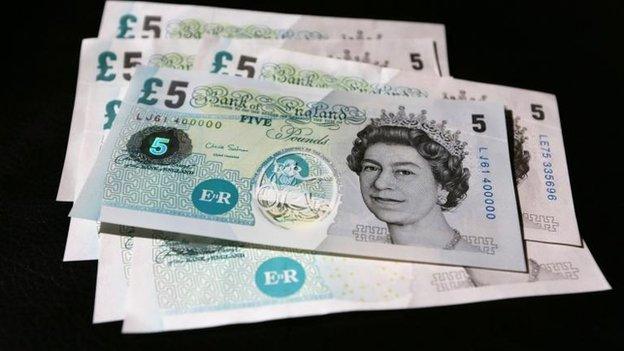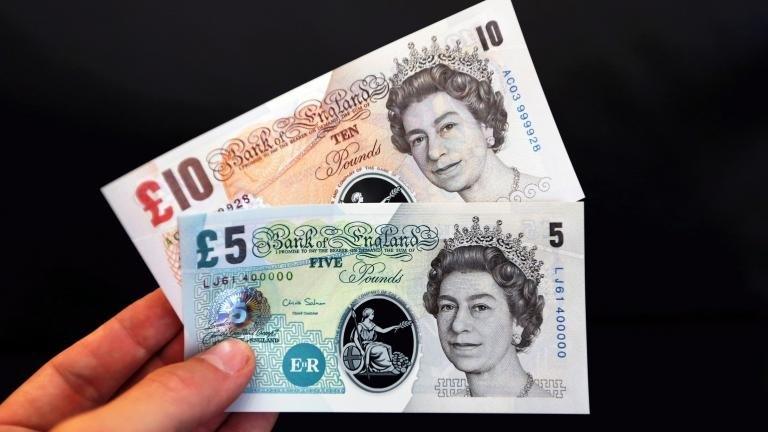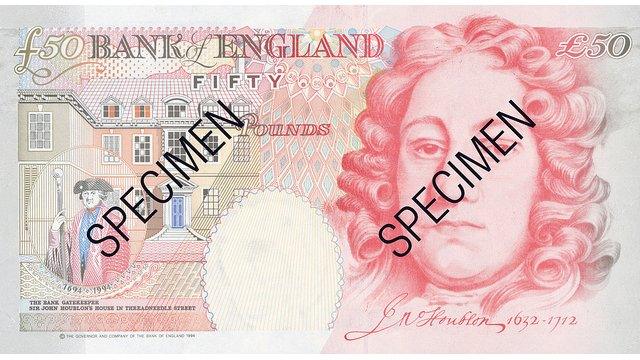Clydesdale Bank brings in plastic £5 notes
- Published

The new banknote was unveiled in the shadow of the Forth Bridge last year
Plastic bank notes are going into circulation in Britain for the first time.
The Clydesdale Bank will issue two million of the polymer £5 notes, which it says are more secure and durable than paper notes.
The bank is one of three in Scotland authorised to issue banknotes.
It is releasing the limited edition notes a year before the Bank of England puts plastic banknotes in general circulation.
The new Clydesdale plastic note features an image of the Forth Bridge and has been issued to commemorate the bridge's 125th anniversary.
The note also features a portrait of Sir William Arrol, whose company constructed the bridge among many other landmarks in Scotland.

The new bank note features Sir William Arrol
It is smaller than the existing currency, which is made from cotton paper, but will still fit in cash machines, the bank has said.
Plastic banknotes are said to last 2.5 times longer than paper banknotes. They will survive a spin in a washing machine but will still melt under extreme heat such as an iron.
The note will also feature various new security features.
The limited edition notes will be available from branches of the Clydesdale.
So far, more than 20 countries around the world have adopted polymer notes.
The Bank of England will begin issuing them next year.

Polymer banknotes, similar to these samples, will be issued by the Bank of England in 2016
In 1999, Northern Bank of Northern Ireland issued a polymer £5 commemorative note celebrating the year 2000.
A plastic note was introduced in the Isle of Man in 1983 but was withdrawn in 1988 owing to problems with the ink.
Other adopters of the notes include Canada, whose last central bank governor - Mark Carney - is now the governor of the Bank of England.
Three banks in Scotland, including Clydesdale Bank, and four in Northern Ireland are authorised to issue banknotes.
- Published18 December 2013

- Published18 November 2011

- Published21 May 2014

- Published1 May 2014

- Published16 January 2014
